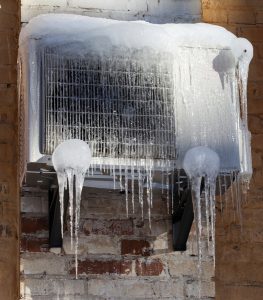 Most homeowners aren’t experts on how modern air conditioning systems operate. There’s no reason they should be. After all, how many people who use microwave ovens have an in-depth understanding of microwave radiation? Professionals exist to handle services like fixing an microwave or repairing an air conditioning system.
Most homeowners aren’t experts on how modern air conditioning systems operate. There’s no reason they should be. After all, how many people who use microwave ovens have an in-depth understanding of microwave radiation? Professionals exist to handle services like fixing an microwave or repairing an air conditioning system.
However, there are a few basic misunderstandings of air conditioning that we want homeowners to know about, because it helps them know when to call for air conditioning repair in O’Fallon, MO from our technicians. One common misunderstanding is that ice along the evaporator coils of an AC is perfectly normal. It’s far from normal—it may even warn of an air conditioner in danger of complete breakdown.
Why Ice Isn’t Something That Should Appear on the Coils
Ice is not part of how an air conditioning system lowers the temperature of a home’s air. Although the air blowing from the vents feels like it’s been cooled by ice, it hasn’t. The air conditioner uses cold refrigerant running through the evaporator coils to draw heat energy from the air, and then it removes the heat to the outdoor condenser coils, where it exhaust the heat outside. This is called heat exchange, and it doesn’t use or create ice …
… unless something is wrong with the heat absorption along the evaporator coils.
Problems That Can Cause Ice to Form
If for some reason the cold refrigerant in the evaporator coils stays too cold, it will cause the condensate moisture along the coil to freeze. Because this ice will further block the refrigerant from drawing in heat, the ice will continue to develop until it blocks the coil from carrying out any heat transfer.
Here are a few of the sources for the evaporator coils losing heat absprtion:
- Grime, dust, mold, mildew along the coils: When the coils become dirty, they’re insulated from the heat around them. It becomes harder to evaporate refrigerant, leaving the refrigerant too cold.
- Malfunctioning blower fan: The blower fan sends warm air brought in through the return air ducts and pushes it over the evaporator coils. When the blower fan starts to fail, less warm air moves over the coils and the refrigerant can’t warm up enough.
- Clogged air filter: When the HVAC cabinet air filter is heavily congested, it also prevents enough warm air from moving across the coils.
- Leaking refrigerant: This is the most serious problem, since losing refrigerant through leaks will eventually cause the compressor to overheat and die. The less refrigerant moving through the evaporator coil, the colder the remaining refrigerant stays.
Rely on Professionals—Not on Scraping Off the Ice
Let experienced HVAC technicians take care of locating the source of the ice, fixing the problem, and the defrosting the coils. Trying to scrape the ice off yourself not only risks damaging the evaporator coils, it fails to address the reason the ice formed in the first place.
Fresh Air Heating & Cooling serves St. Louis County and St. Charles County. Request air conditioning repair today and bring fresh air into your home.
